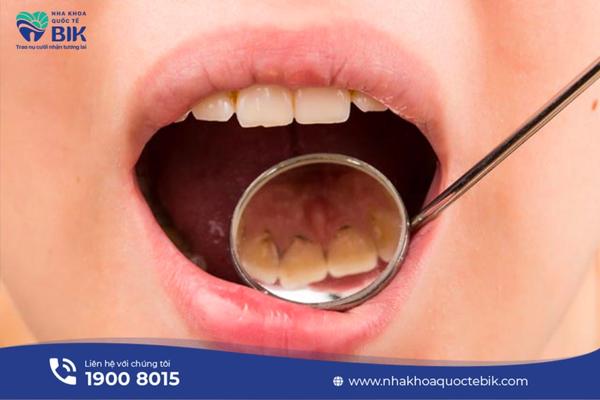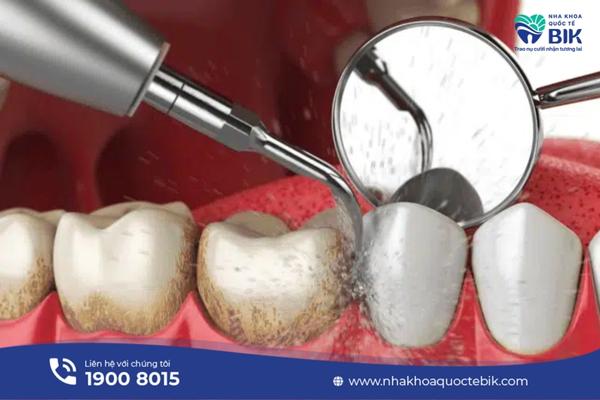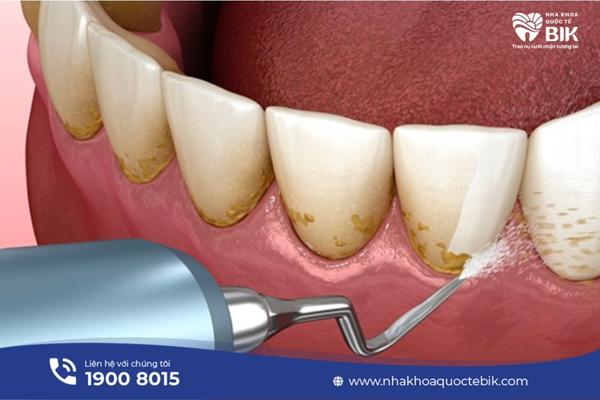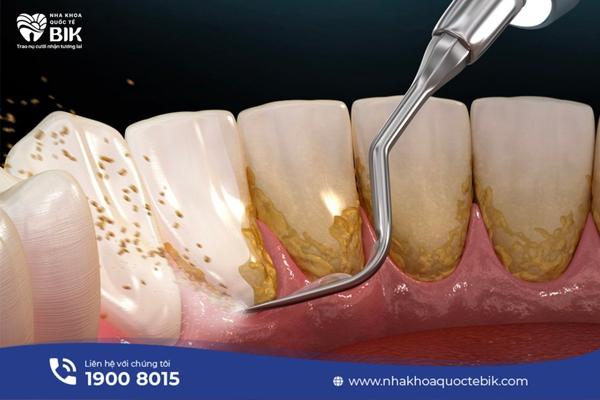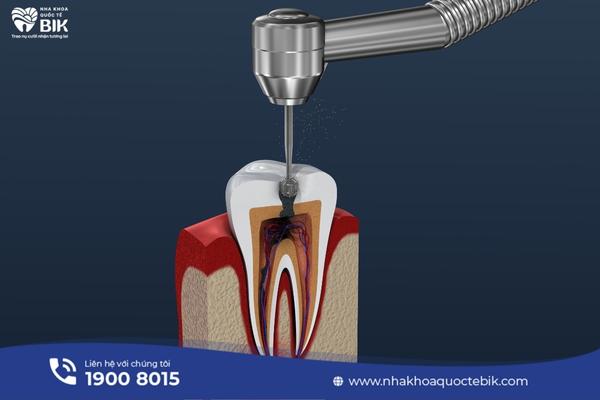Filling gaps between teeth seems to be the most optimal and economical cosmetic restoration solution for cases where teeth are spaced apart by a certain distance. In cases where there is no need to treat other oral diseases before filling teeth, customers will only spend about 15 minutes at the dentist to fix the defects of the teeth, helping the teeth to be even, beautiful, and closer together.
1. What is filling gaps between teeth?
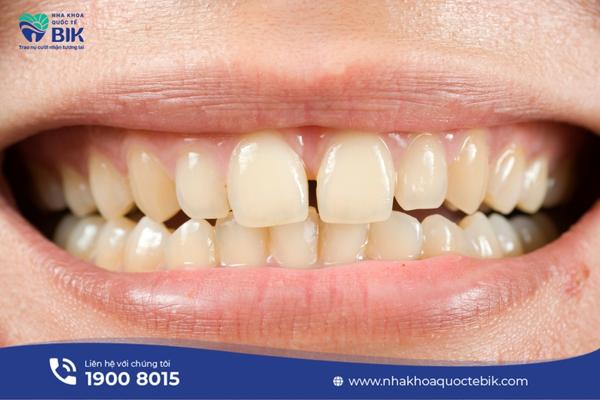
Gap teeth are a condition in which the gap between the teeth is quite large due to crooked teeth, impacted teeth, the influence of oral diseases, improper brushing, etc. To overcome this condition and bring confidence when smiling, cosmetic tooth filling is considered the most optimal solution.
Filling tooth gaps is a fairly simple and popular technique. When applying this technique, the gap between the teeth will be filled with specialized materials. After being filled, the teeth will bring higher aesthetics but still do not cause pain, discomfort or affect normal chewing function.
2. Should I fill my spaced teeth?
Filling spaced teeth not only improves the aesthetics of the teeth but also brings many other benefits:
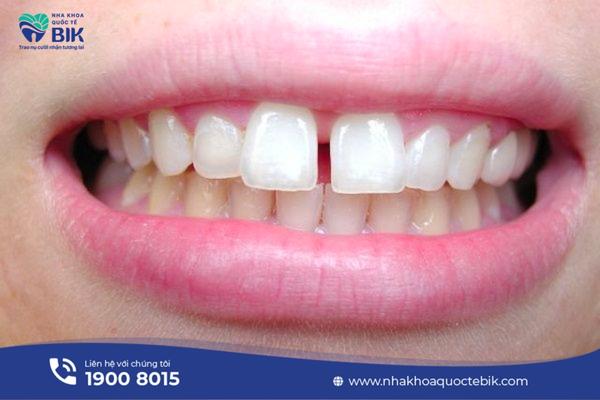
– Improve aesthetics quickly and effectively
– Preserve real teeth
– Reasonable cost
– Improve chewing ability effectively
– Reduce food sticking to teeth
– Prevent the risk of oral diseases such as tooth decay, gingivitis, periodontitis, etc.
So filling teeth is the best solution when you want to fix teeth gaps. However, in cases where the gap between teeth is too large, filling teeth will no longer bring the desired effect, at this time, customers will be advised on cosmetic porcelain crowns. Because if the gap between the teeth is too large, it will cause an aesthetic imbalance and the filling will easily come off, so the method of filling sparse teeth is often indicated for cases where the gap between teeth is less than 2mm.
->> See more: Does tooth filling hurt?
3. Materials for filling gaps between teeth
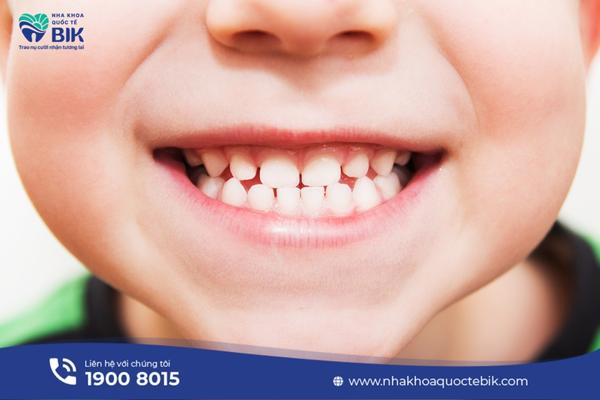
Since most cases of filling gaps between teeth need to improve the aesthetics of the front teeth, the following materials are often used to achieve the desired results:
3.1. Filling gaps between teeth with composite
Composite (dental composite resin) is a mixture of fine plastic and glass particles and is the most commonly used material today. The reason it is used to fill gaps between teeth in visible positions is because Composite has an ivory white color like real teeth, so it will ensure aesthetics. In addition, this material has high biocompatibility with the body, so it is completely safe and benign. However, Composite has the characteristic of gradually shrinking after filling, so small holes will gradually appear and the filling will only last about 5 years. Composite is also not able to withstand too much chewing force.
3.2. Porcelain Materials
Inlay – Onlay porcelain fillings are also a popular technique today, suitable for cases of large chipped teeth. Porcelain fillings have an average lifespan of up to 10 years and have the same color as real teeth, so they are very aesthetic. In addition, porcelain materials are also very resistant to dirt and corrosion.
4. How long does a filling last for a gap in teeth?
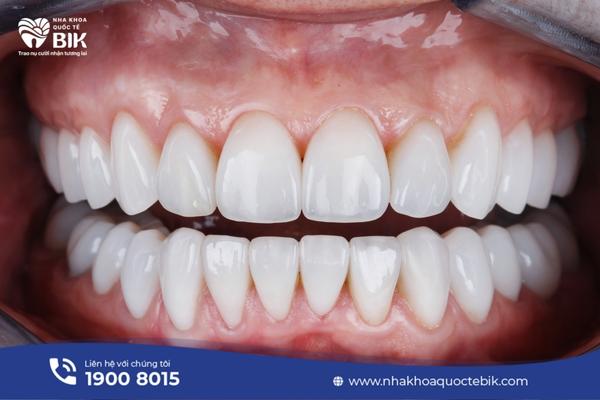
The durability of a filling depends on the following factors:
4.1. Dental filling material
Dental filling material is considered the most important factor affecting the life of the filling. Normally, each type of material will have a different durability. Specifically, Composite usually has a life span of about 2-3 years because it is easily discolored and absorbs saliva, creating an unpleasant odor for the breath. Ceramic materials have a longer life span, about 15-20 years, and the price is also higher.
4.2. Doctor’s skills
Although filling gaps in teeth is a fairly simple technique, if performed by a doctor with poor expertise, not much experience, and improper techniques, it will also affect the life of the filling. In addition, if the dental facility does not invest in modern technology to support, the quality of the filling will not be guaranteed.
4.3. Condition of the tooth that needs filling
In case the tooth needs root canal treatment, the life of the filling will not last as long as the tooth that is only slightly damaged and does not affect the pulp.
4.4. How to take care of your teeth after filling
How to take care of your teeth after filling also contributes to maintaining the life of the filling. If you know how to use a toothbrush and dental floss properly so as not to affect the filling but still achieve maximum oral hygiene, the filling will have maximum longevity.
5. Procedure for filling gaps between teeth
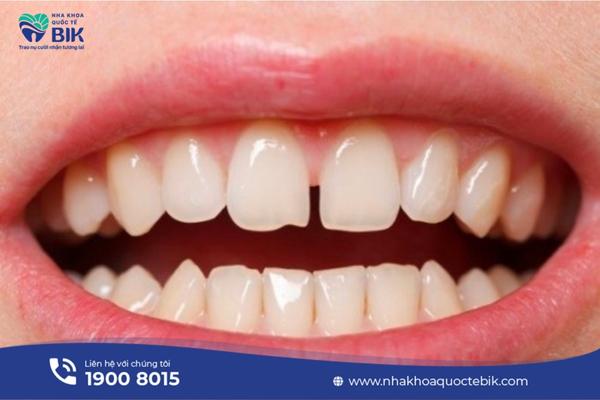
The procedure for filling gaps between teeth is quite simple and only requires one visit to the dentist to complete the procedure. After only about 15 minutes, customers can have a confident smile with beautiful, even teeth.
5.1. Examination and consultation
First, the doctor will conduct a general examination of the condition of the spaced teeth, determine and advise on some types of materials used to fill the teeth.
5.2. Anesthesia
The oral cavity will be thoroughly cleaned before being locally anesthetized at the site to be filled to avoid the risk of infection. In the case of tooth decay, the decayed tooth tissue will be thoroughly scraped off before filling the tooth.
5.3. Tooth filling
The material used to fill the tooth will be poured into the hole to be filled. Initially, the material will be in liquid form, after about 40 seconds of laser irradiation, it will harden due to photopolymerization reaction.
5.4. Polishing teeth
The dentist will remove excess filling material and polish the surface so that the filling does not cause discomfort and ensures maximum aesthetics.
6. How to care for teeth after filling gaps
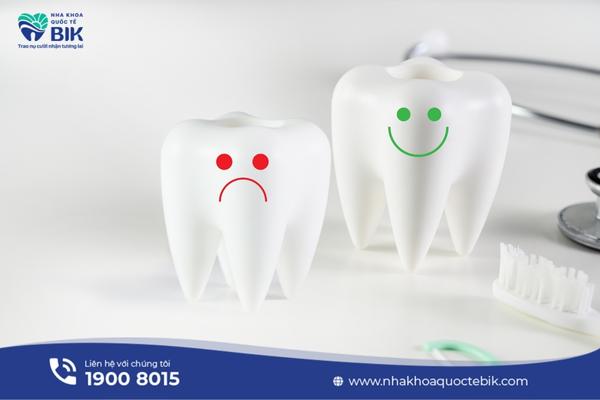
The process of caring for teeth after filling plays a very important role in prolonging the life of the filling:
6.1. Proper oral hygiene
Use a soft-bristled toothbrush to clean your teeth at least twice a day, and can be combined with dental floss to thoroughly remove food debris between your teeth. Note that you need to brush your teeth gently and not brush hard in the newly filled area to avoid the filling from peeling off.
6.2. Reasonable diet
– You need to wait about 2 hours after filling before you can eat and drink normally because even though the filling has been treated with laser, it still needs time to completely harden
– Do not eat hard, chewy foods to avoid the filling from deforming or peeling off due to excessive chewing force. In addition, you should also limit the use of foods that are too hot or too cold immediately after filling because it can cause tooth sensitivity.
– Limit dark-colored foods such as coffee and tea to avoid discoloring the filling.
So tooth filling is the simplest and most common solution for the condition of sparse teeth that makes your smile less beautiful every day. However, not all cases of sparse teeth can be filled, so you still need the advice of a dentist at the dentist to choose the most suitable solution for each oral condition.


